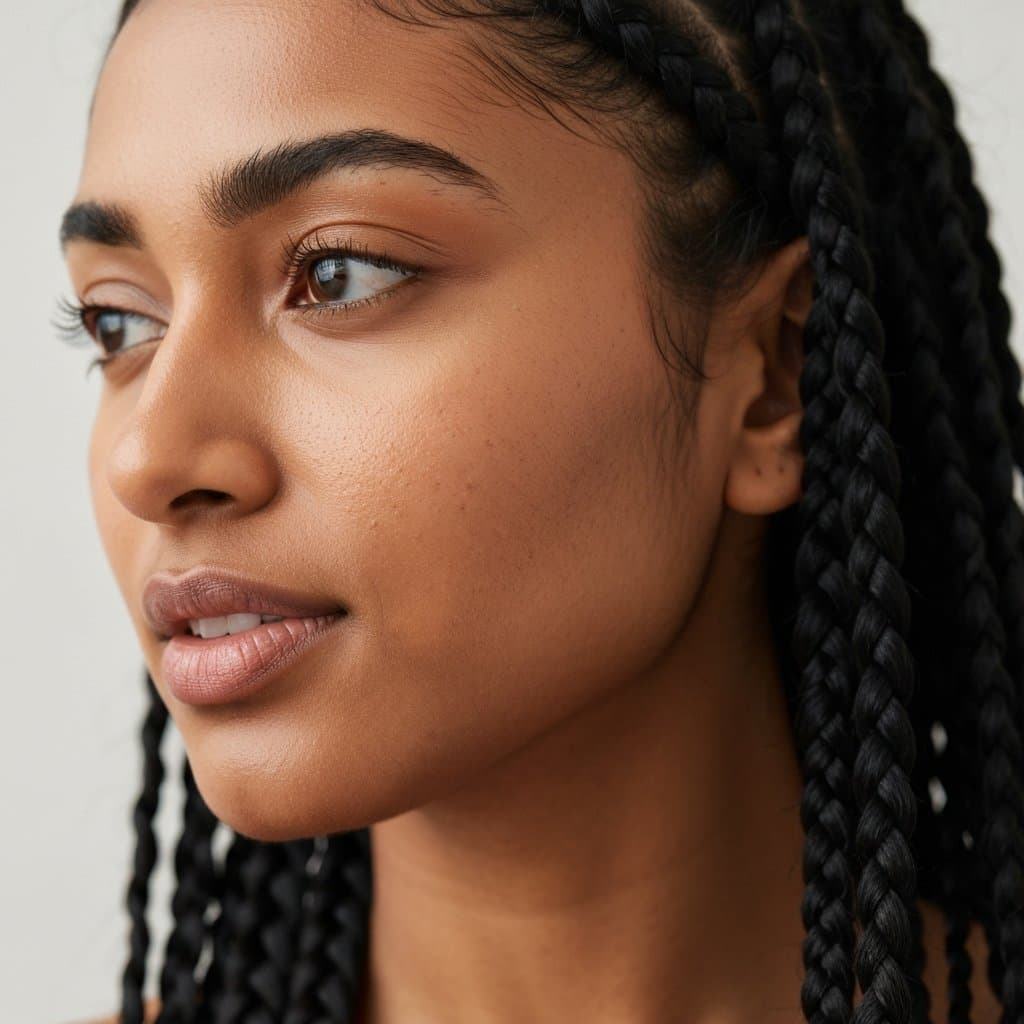Knotless Braids: The Ultimate Guide to the Most Comfortable Protective Style | Benefits, Care & FAQs
The Evolution of Comfort: An Introduction to Knotless Braids
In the world of protective styling, innovation is driven by the desire for beauty, versatility, and, increasingly, comfort. For decades, traditional box braids have been a beloved staple, celebrated for their longevity and timeless appeal. However, the initial tightness and tension on the scalp have always been a well-known drawback. Enter the game-changer: knotless braids. This modern technique has rapidly gained popularity, revolutionizing the braiding experience by prioritizing scalp health and comfort without sacrificing style. Unlike their predecessors, knotless braids begin with your natural hair, with extension hair gradually fed in, eliminating the tight, tension-inducing knot at the base.
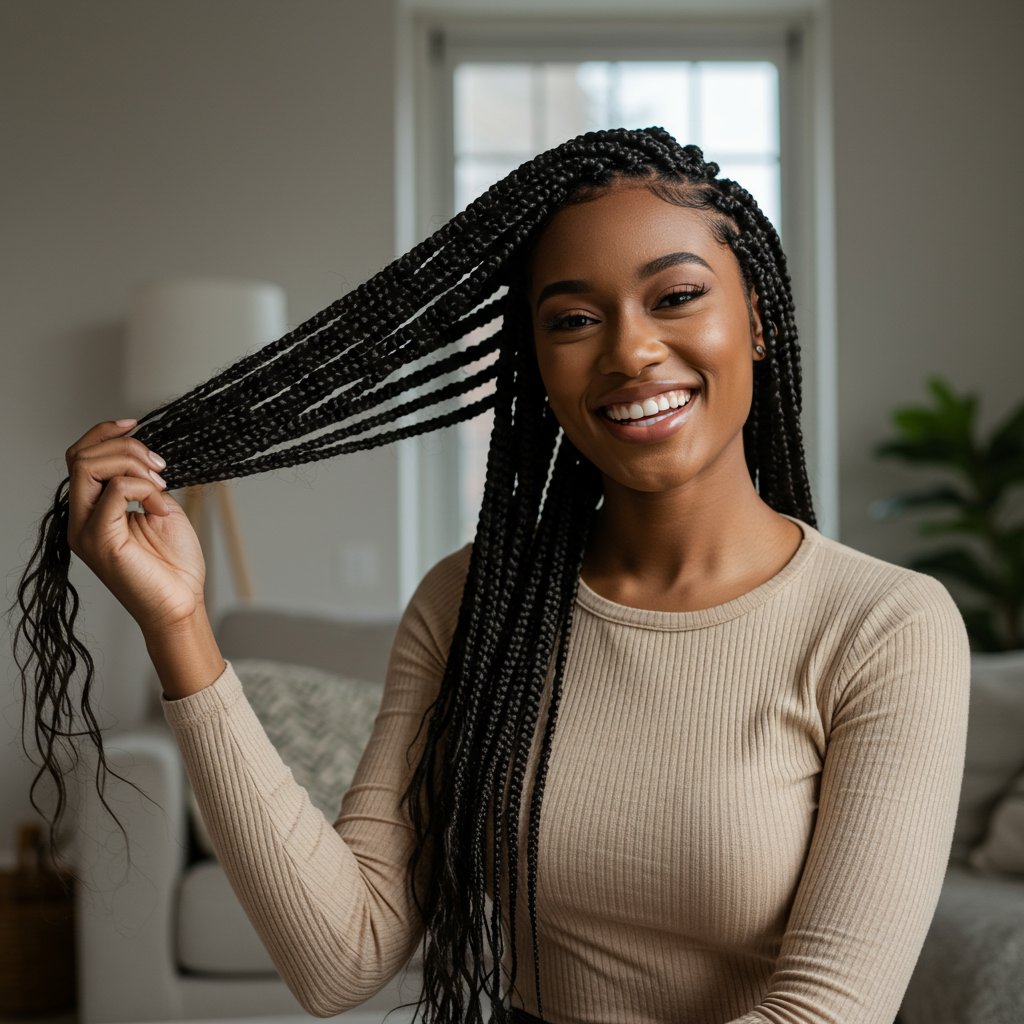
This comprehensive guide is your ultimate resource for understanding everything about knotless braids. We will delve into what makes this style so unique, explore its extensive benefits, compare it directly to traditional box braids, and walk you through the entire process from preparation to long-term maintenance. Whether you're a seasoned protective style enthusiast or considering braids for the first time, you'll discover why knotless braids are being hailed as the most comfortable and scalp-friendly option available today. Prepare to learn how you can achieve a flawless, lightweight, and stunningly natural look that protects your hair and lets you style with immediate freedom.
What Exactly Are Knotless Braids? The Modern Twist on a Classic Style
At first glance, knotless braids might look similar to classic box braids, but the fundamental difference lies in the installation technique—a difference that has profound implications for your scalp's health and comfort. The defining characteristic of knotless braids is the absence of the small anchor knot used to secure the extension to the base of each parted section. Instead, the process utilizes a feed-in method. The braid is started using only your natural hair, and then small, incremental pieces of braiding hair are seamlessly added as the stylist braids down the hair shaft.
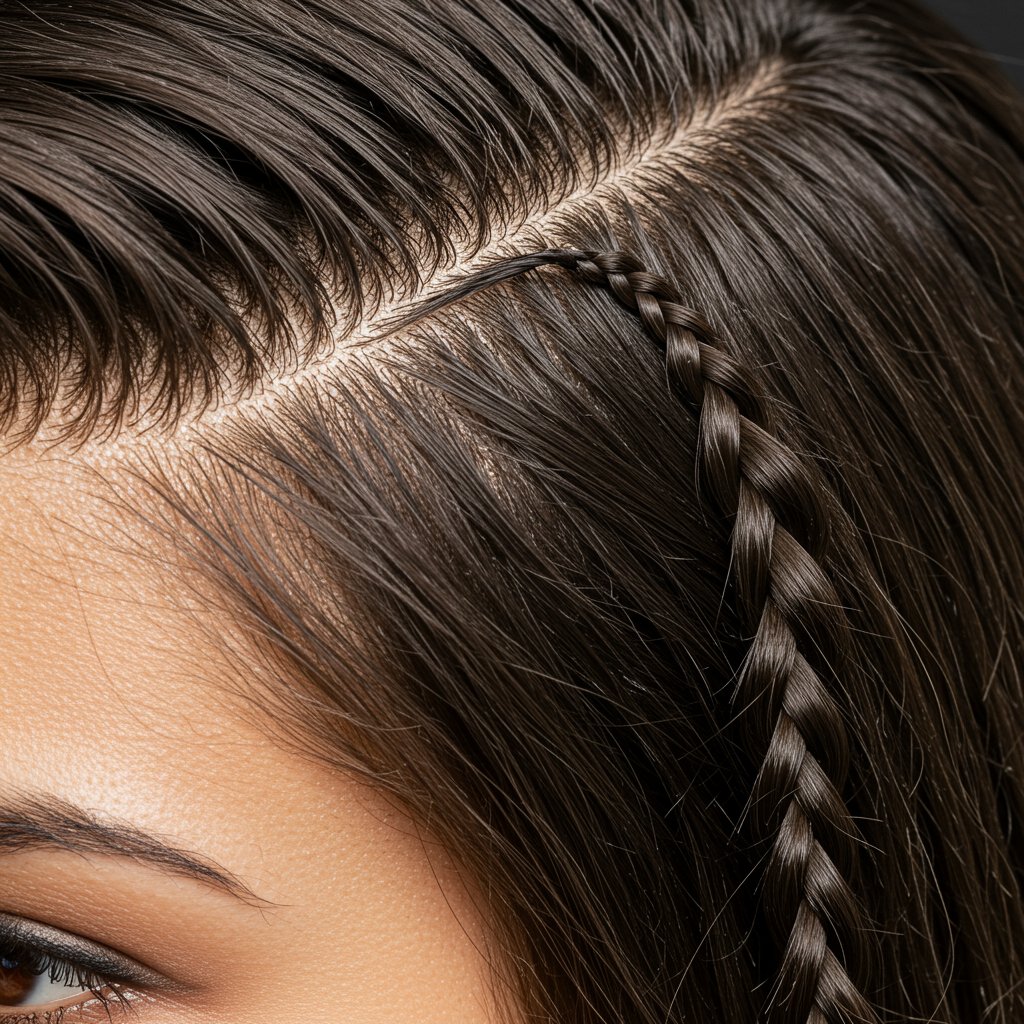
This innovative approach creates a braid that lies flat against the scalp, offering a more natural and seamless appearance from the root. The transition from your natural hair to the extension is smooth and undetectable, mimicking the look of braids growing directly from your scalp. The result is a style that is not only aesthetically pleasing but also significantly lighter and more flexible than traditional box braids. This method distributes the weight of the extension hair more evenly, preventing the localized stress and tension that can lead to scalp soreness, headaches, and even hair loss over time.
The Unmatched Benefits: Why Everyone is Choosing Knotless Braids
The surge in popularity for knotless braids is no coincidence; it's a direct result of the tangible benefits they offer over other protective styles. These advantages address long-standing concerns about comfort, scalp health, and styling versatility, making them a superior choice for many.
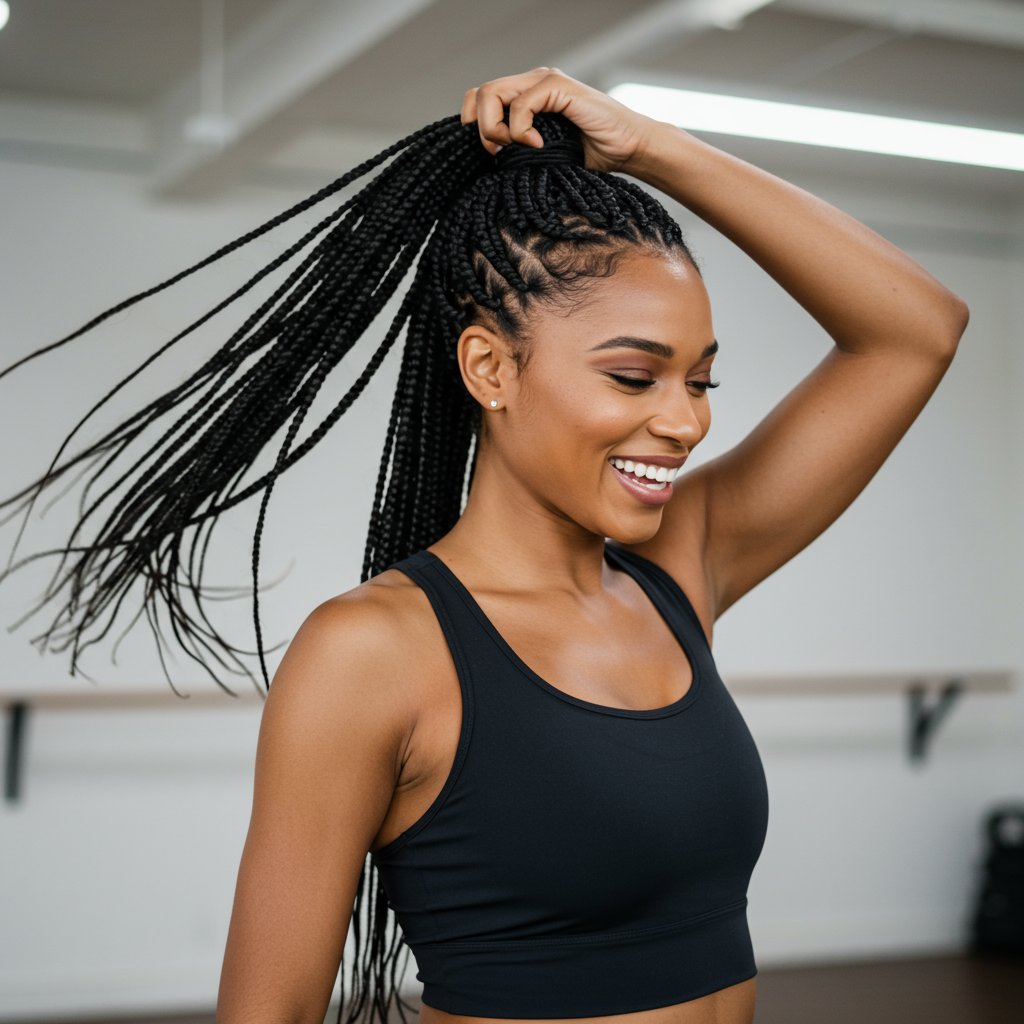
Pain-Free & Low Tension
The most significant benefit is the dramatic reduction in scalp tension. The feed-in method eliminates the tight knot at the root, which is the primary cause of pain, inflammation, and those tell-tale bumps (folliculitis) often associated with new braids. This makes the installation process and the first few days of wear significantly more comfortable. More importantly, this low-tension approach is a crucial factor in preventing traction alopecia, a form of hair loss caused by constant pulling on the hair follicles. By choosing knotless braids, you are actively protecting your hairline and overall hair density.Natural Appearance & Immediate Flexibility
Because they lie flat against the head, knotless braids offer a sleek, natural look that is hard to achieve with traditional methods. The seamless blend of your hair with the extensions provides an understated elegance. This flat-laying foundation also means incredible flexibility from day one. You can style your hair in a high ponytail, a bun, or any updo immediately after leaving the salon chair without the usual waiting period for the braids to "loosen up." This freedom of movement makes them incredibly practical for active lifestyles and versatile styling needs.Lightweight & Scalp-Friendly
The installation technique not only reduces tension but also results in a lighter overall feel. By avoiding a bulky knot at the base of each braid, the style feels less heavy and cumbersome, reducing strain on your neck and scalp. This makes wearing knotless braids, especially in longer lengths, a much more pleasant experience. The gentle nature of the style is also ideal for individuals with sensitive scalps or fine hair, as it provides the protective benefits of braiding without compromising the integrity of delicate hair strands.Knotless vs. Traditional Box Braids: A Side-by-Side Comparison
While both styles offer protection and beauty, understanding their key differences is essential for making an informed decision. Here’s a detailed breakdown of how knotless braids stack up against their traditional counterparts.
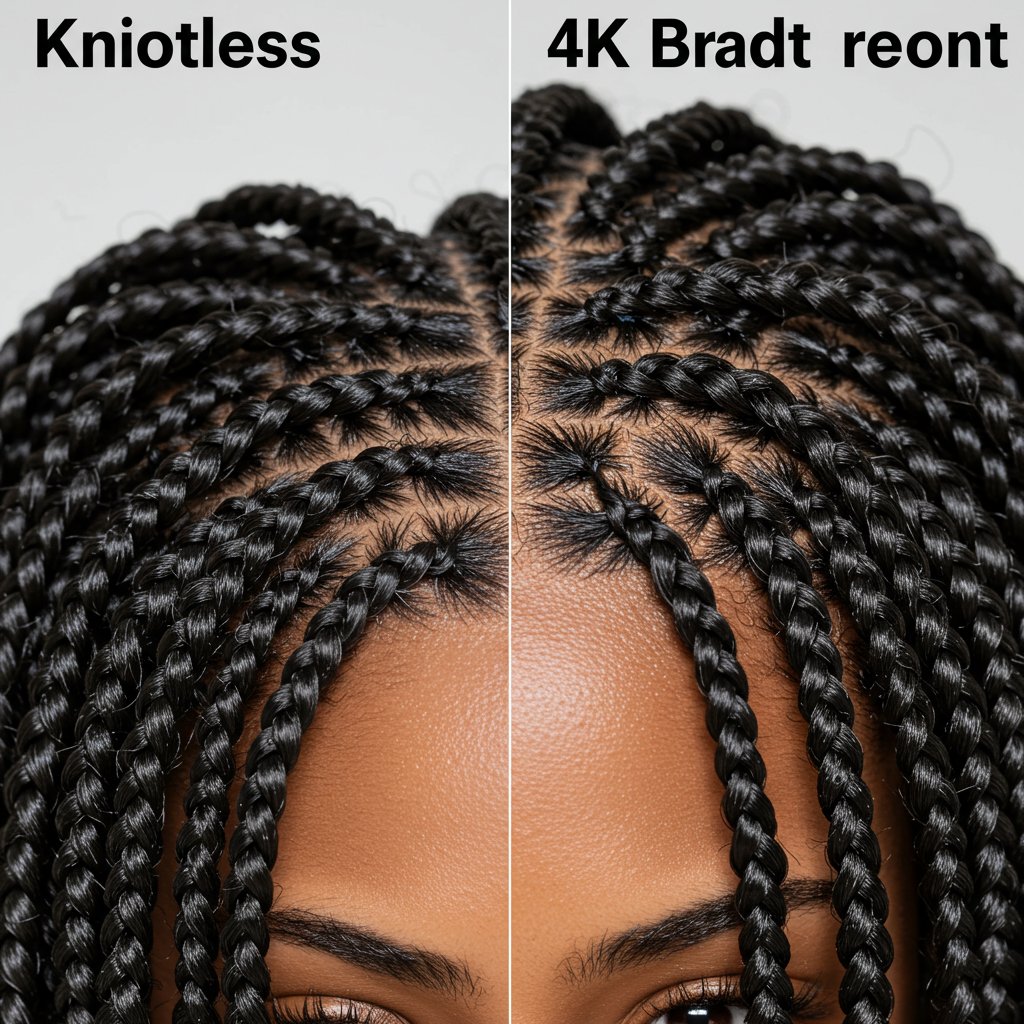
Installation Process & Time
Traditional box braids begin by wrapping extension hair tightly around the base of the natural hair, forming a distinct knot. This method is generally faster, as the stylist can anchor the extension quickly and maintain consistent tension. Knotless braids, however, require more precision and time. The stylist must skillfully start with the natural hair and gradually feed in the extensions. This meticulous process typically adds one to three hours to the appointment time, but the comfortable result is well worth the extra investment.Scalp Tension & Health
This is the most critical point of differentiation. The anchor knot in traditional braids creates immediate, high tension on the hair follicle, which can cause discomfort for days and increases the risk of traction alopecia. Knotless braids, with their tension-free start, are unequivocally better for scalp health. They minimize pulling and allow the scalp to breathe, making them a safer long-term protective styling option. Individuals prone to scalp sensitivity or hair thinning at the edges will find knotless braids to be a far superior choice.Appearance, Feel & Longevity
Traditional braids have a more pronounced, raised appearance at the root due to the knot, giving them a classic, bold look. Knotless braids offer a flatter, more seamless look that blends into the natural hair. In terms of feel, knotless braids are lighter and more flexible. Regarding longevity, traditional braids may last slightly longer due to the tight anchor knot providing a secure base. Knotless braids, while still a long-lasting style (typically 4-8 weeks), may show signs of new growth a bit sooner. However, proper maintenance can easily extend their lifespan.Preparing Your Hair for a Flawless Knotless Braid Installation
The foundation of a beautiful and long-lasting protective style is healthy, well-prepared hair. Taking the right steps before your salon visit ensures a smoother installation process and protects your natural hair from breakage.
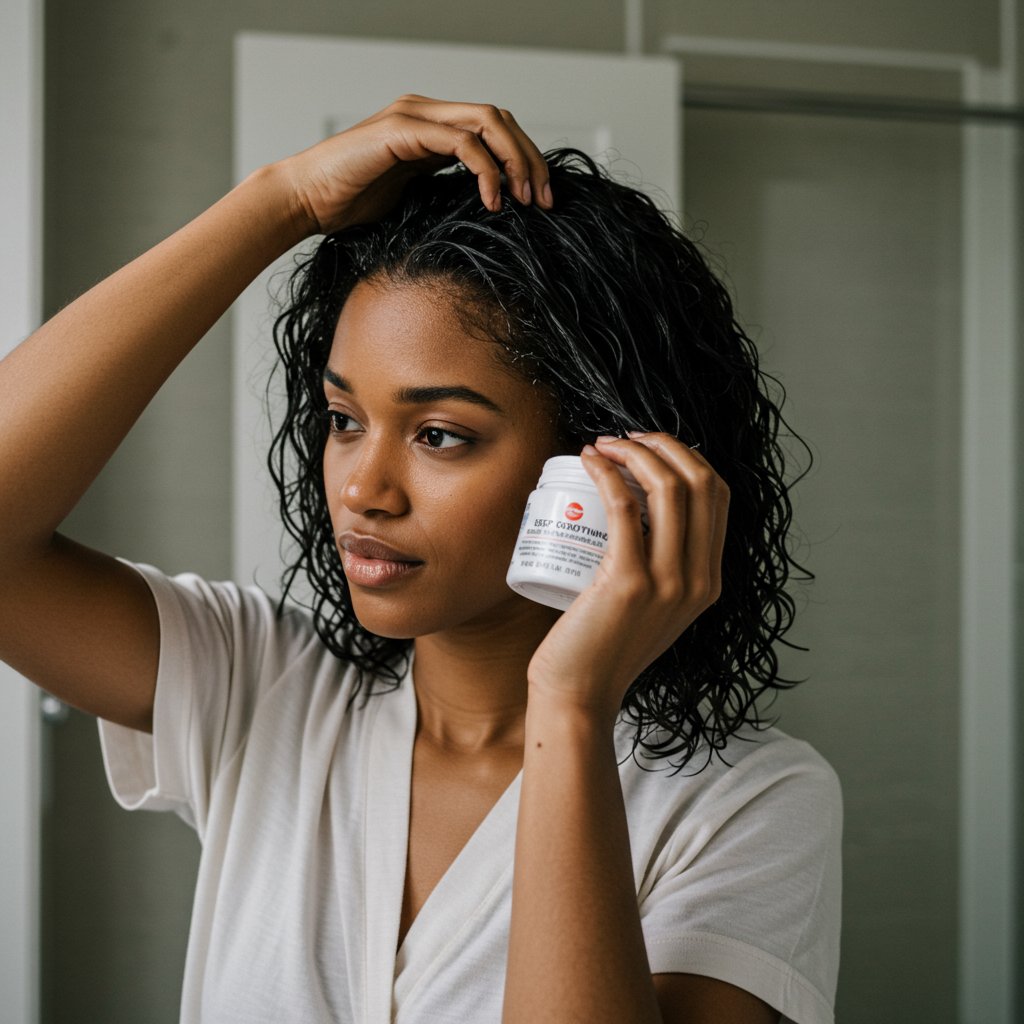
Step 1: Deep Cleansing & Clarifying
Start with a clean slate. Use a good clarifying shampoo to remove all product buildup, dirt, and oil from your hair and scalp. A clean scalp is essential for healthy hair growth underneath the braids and prevents itching and flaking. Follow up with a moisturizing shampoo to restore hydration, as clarifying formulas can be stripping.Step 2: Intense Hydration & Deep Conditioning
This is a non-negotiable step. Your hair will be tucked away for several weeks, so infusing it with maximum moisture beforehand is crucial. Apply a rich, hydrating deep conditioner or hair mask. For an extra boost, use a steamer or a hooded dryer (or simply cover your hair with a plastic cap) for 20-30 minutes to help the conditioner penetrate the hair shaft deeply. This step strengthens the hair and improves its elasticity, making it less prone to breakage during the braiding process.Step 3: Thorough Detangling & Stretching
A smooth installation requires thoroughly detangled hair. After conditioning, carefully detangle your hair in sections using a wide-tooth comb or your fingers, working from the ends up to the roots. To achieve the sleekest results, it's highly recommended to have your hair stretched. A professional stylist will typically blow-dry the hair on a low to medium heat setting. This makes parting easier, reduces tangles, and helps the final style look neat and polished.The Knotless Braid Installation: What to Expect at the Salon
Knowing what to expect during your appointment can make the experience more relaxing and ensure you get the exact style you envision. The knotless braid installation is an art that requires a skilled hand.

Consultation and Parting
Your appointment will begin with a consultation. You and your stylist will discuss the desired size (small, medium, jumbo), length, and the color of the braiding hair. This is the time to voice any concerns, especially if you have a sensitive scalp. Once the plan is set, the stylist will begin the meticulous process of parting your hair. Precision is key here; clean, sharp parts are the foundation of a neat and professional-looking final style, whether you opt for classic box parts, triangles, or a more organic pattern.The Feed-In Technique in Action
This is where the magic happens. For each braid, the stylist will take a small section of your natural hair and begin a standard three-strand braid. After the first one or two stitches, they will start adding small pieces of pre-stretched extension hair. They will continue to add these small pieces incrementally as they braid down, gradually increasing the thickness of the braid until it reaches the desired size. This gradual addition is what creates the seamless, flat root and tension-free feel.Sealing the Ends
Once all the braids are complete, the final step is to seal the ends to prevent them from unraveling. The most common and effective method is dipping the ends in hot water. This not only seals the braid but also helps the synthetic hair to lay flat and smooth. Your stylist will carefully dip the ends for a few seconds and then pat them dry with a towel. Some clients may opt for curly or wavy ends, which can be achieved by braiding or twisting the ends before dipping.Aftercare & Maintenance: Making Your Knotless Braids Last
Proper aftercare is essential to keep your knotless braids looking fresh and to ensure your natural hair remains healthy underneath. With a consistent routine, you can maximize the lifespan of your style, which typically lasts from four to eight weeks.
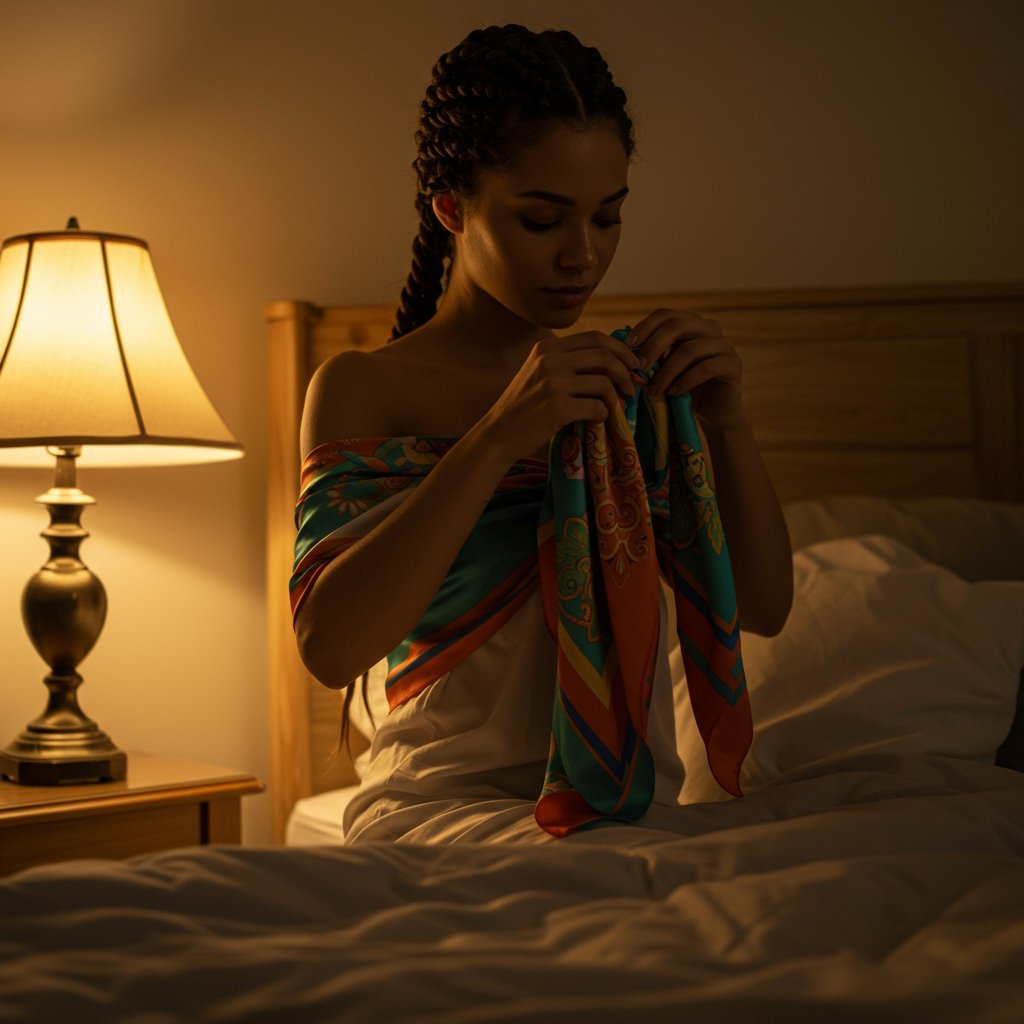
Daily Scalp Care
A healthy scalp leads to healthy hair. While you don't need to oil your scalp excessively, keeping it moisturized is important to prevent dryness and itching. Use a lightweight spray-on leave-in conditioner or a natural oil like jojoba or almond oil applied with a nozzle-tip bottle. Lightly mist your scalp and the length of your braids every couple of days to maintain hydration without causing heavy buildup.Cleansing Your Braids
Yes, you can and should wash your braids. Aim to cleanse your scalp every 1-2 weeks. To do this, dilute a moisturizing, sulfate-free shampoo with water in a spray bottle. Spray the mixture directly onto your scalp and gently massage with the pads of your fingers (not your nails). Let the suds run down the length of the braids, gently squeezing them. Rinse thoroughly with lukewarm water. Follow up by applying a diluted leave-in conditioner to the braids to restore moisture.Nighttime Protection
This is the single most important step for preserving your style. Frizz is the enemy of long-lasting braids. Every night, without fail, protect your hair by tying it up with a silk or satin scarf or by wearing a large satin bonnet. This minimizes friction against your pillowcase, which can cause frizz and flyaways, especially around the roots and edges. Using a satin pillowcase is an excellent backup for extra protection.Frequently Asked Questions About Knotless Braids
Here are answers to some of the most common questions about this popular protective style.
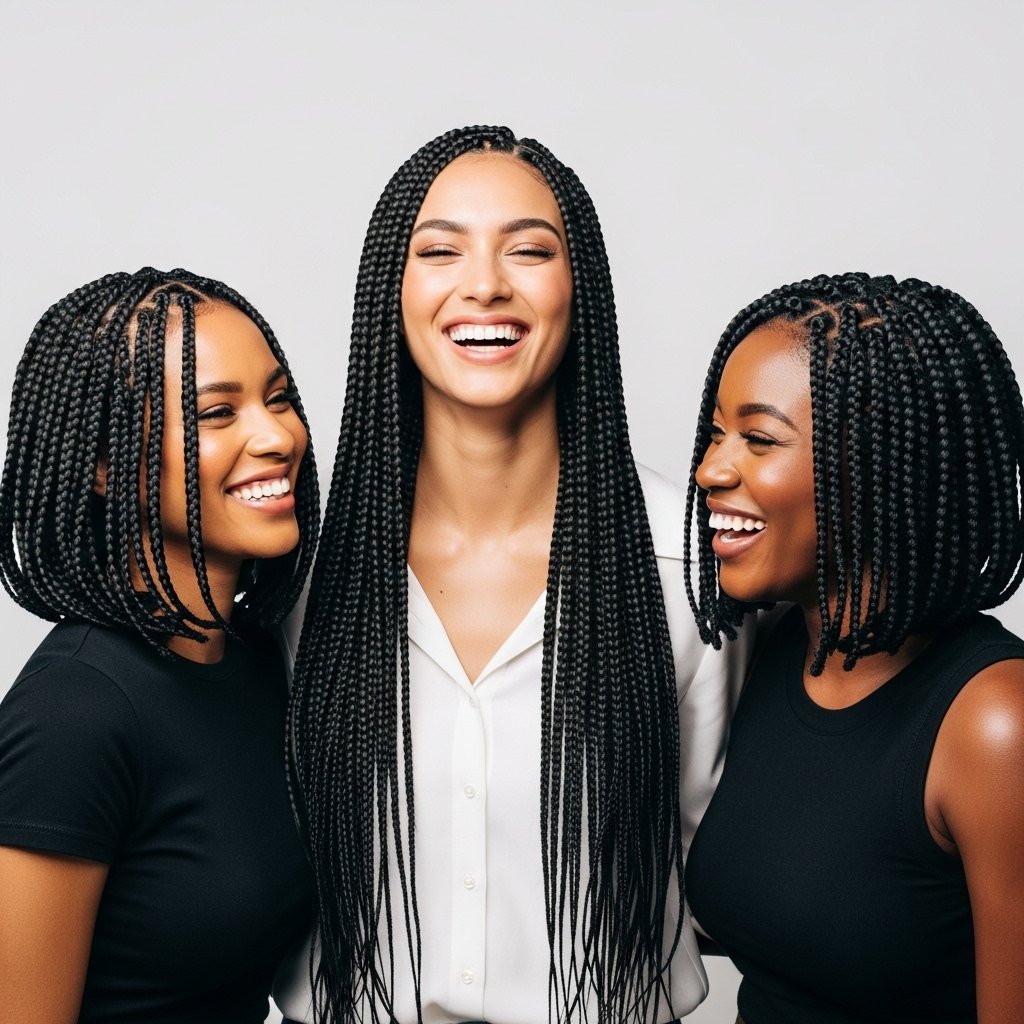
How long do knotless braids last?
With proper care and maintenance, knotless braids can last between 4 to 8 weeks. The longevity often depends on the size of the braids (smaller braids tend to last longer) and how fast your natural hair grows. It's generally not recommended to keep them in longer than 8 weeks to prevent matting and allow your natural hair to rest.Are knotless braids damaging to your hair?
When installed and maintained correctly, knotless braids are one of the least damaging protective styles. Because they eliminate the high-tension knot at the root, they significantly reduce the risk of breakage and traction alopecia. The key is to ensure the braids aren't installed too tightly and to follow a proper moisture routine.Can I get knotless braids with fine or thin hair?
Absolutely. Knotless braids are an excellent option for those with finer hair textures because they are lightweight and put less stress on the hair follicles. It's best to opt for small or small-medium sized braids to ensure the weight of the extension hair doesn't overwhelm your natural hair density.How long does the installation take?
Be prepared to set aside a good portion of your day. The installation time for knotless braids typically ranges from 4 to 9 hours, depending heavily on the desired size and length of the braids, as well as the speed of the stylist. Small, waist-length braids will take considerably longer than medium, shoulder-length braids.How much do knotless braids typically cost?
Knotless braids are generally more expensive than traditional box braids due to the higher level of skill and the longer time required for installation. The cost can vary widely based on your location, the stylist's experience, and the size and length of the braids, but you can expect to pay anywhere from $175 to $600+.Can I swim with knotless braids?
Yes, you can swim with knotless braids. However, it requires immediate aftercare. After swimming in a pool or the ocean, it's crucial to rinse your hair thoroughly with fresh water to remove chlorine or salt. Follow up with a light cleanse using a diluted shampoo and apply a leave-in conditioner to restore moisture and prevent your natural hair from drying out.Conclusion: Embrace the Future of Protective Styling
Knotless braids have rightfully earned their place as a top-tier protective style, offering a masterful blend of elegance, comfort, and hair health. By eliminating the tension-causing knot and embracing a more organic, feed-in technique, they provide a pain-free experience and unparalleled styling flexibility from the moment you leave the salon. This modern evolution of a classic style demonstrates a growing commitment within the hair community to prioritize the long-term health of our hair and scalps.
From their natural appearance to their lightweight feel, the benefits are clear. Whether you have a sensitive scalp, fine hair, or simply want to avoid the discomfort of traditional braids, the knotless method is a superior choice. Ready to experience the comfort and beauty of knotless braids for yourself? Find an experienced, professional stylist who can bring your vision to life and guide you toward a healthier, more enjoyable protective styling journey.

